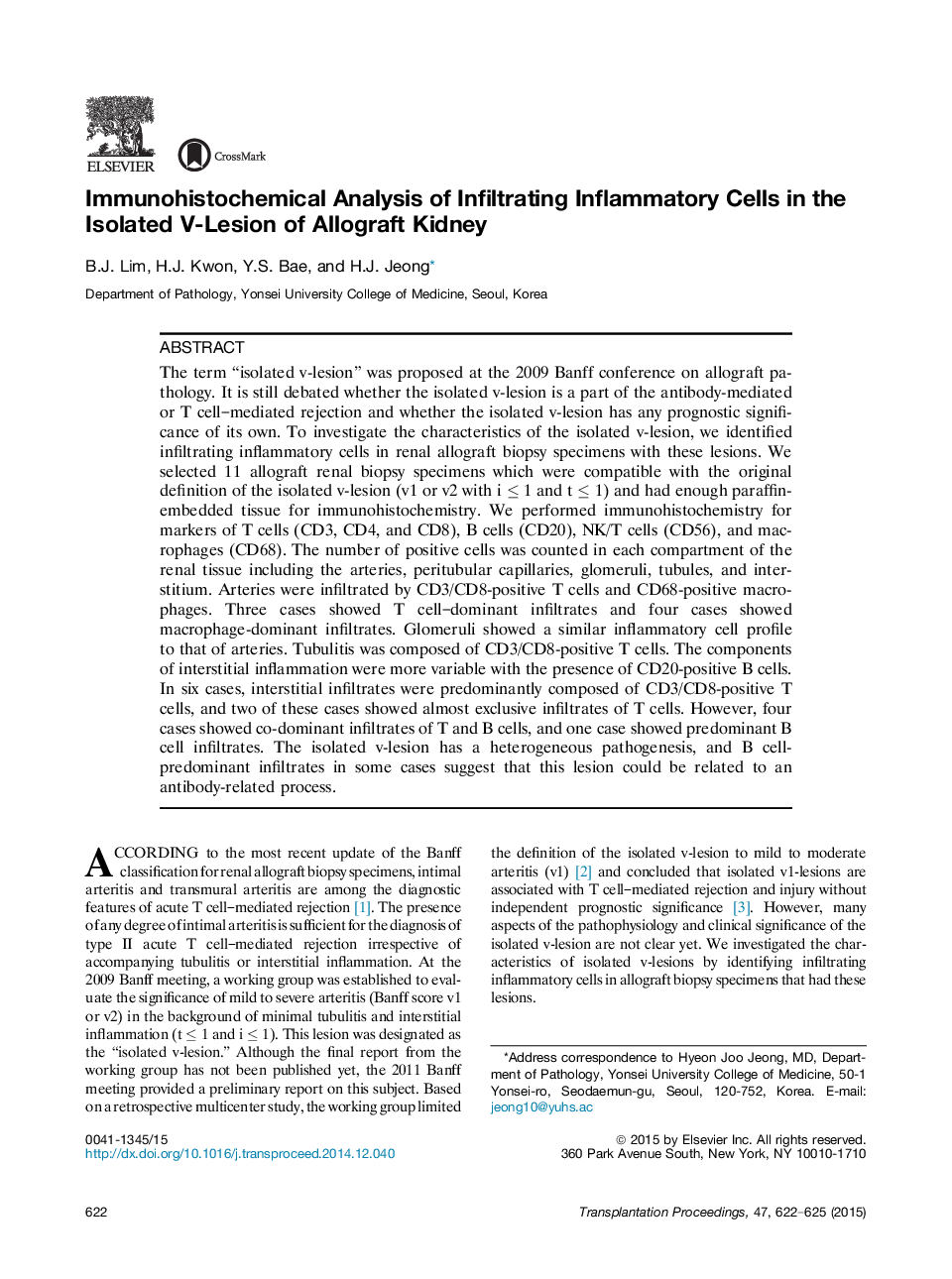| کد مقاله | کد نشریه | سال انتشار | مقاله انگلیسی | نسخه تمام متن |
|---|---|---|---|---|
| 6247799 | 1284520 | 2015 | 4 صفحه PDF | دانلود رایگان |
- The significance of the isolated v-lesion is not clear yet.
- We evaluated the profile of inflammatory cells in the isolated v-lesion.
- Some cases are composed of interstitial T and B cells.
- The isolated v-lesion has heterogenous pathogenesis.
The term “isolated v-lesion” was proposed at the 2009 Banff conference on allograft pathology. It is still debated whether the isolated v-lesion is a part of the antibody-mediated or T cell-mediated rejection and whether the isolated v-lesion has any prognostic significance of its own. To investigate the characteristics of the isolated v-lesion, we identified infiltrating inflammatory cells in renal allograft biopsy specimens with these lesions. We selected 11 allograft renal biopsy specimens which were compatible with the original definition of the isolated v-lesion (v1 or v2 with i ⤠1 and t ⤠1) and had enough paraffin-embedded tissue for immunohistochemistry. We performed immunohistochemistry for markers of T cells (CD3, CD4, and CD8), B cells (CD20), NK/T cells (CD56), and macrophages (CD68). The number of positive cells was counted in each compartment of the renal tissue including the arteries, peritubular capillaries, glomeruli, tubules, and interstitium. Arteries were infiltrated by CD3/CD8-positive T cells and CD68-positive macrophages. Three cases showed T cell-dominant infiltrates and four cases showed macrophage-dominant infiltrates. Glomeruli showed a similar inflammatory cell profile to that of arteries. Tubulitis was composed of CD3/CD8-positive T cells. The components of interstitial inflammation were more variable with the presence of CD20-positive B cells. In six cases, interstitial infiltrates were predominantly composed of CD3/CD8-positive T cells, and two of these cases showed almost exclusive infiltrates of T cells. However, four cases showed co-dominant infiltrates of T and B cells, and one case showed predominant B cell infiltrates. The isolated v-lesion has a heterogeneous pathogenesis, and B cell-predominant infiltrates in some cases suggest that this lesion could be related to an antibody-related process.
Journal: Transplantation Proceedings - Volume 47, Issue 3, April 2015, Pages 622-625
